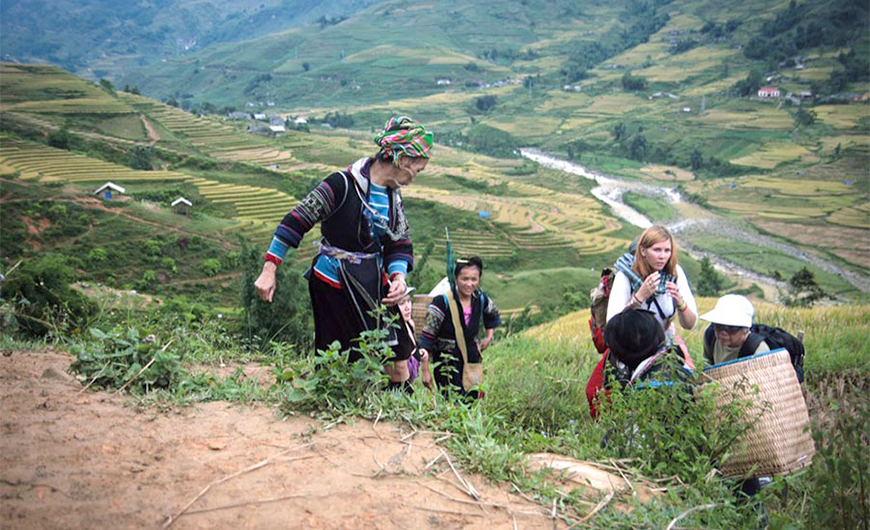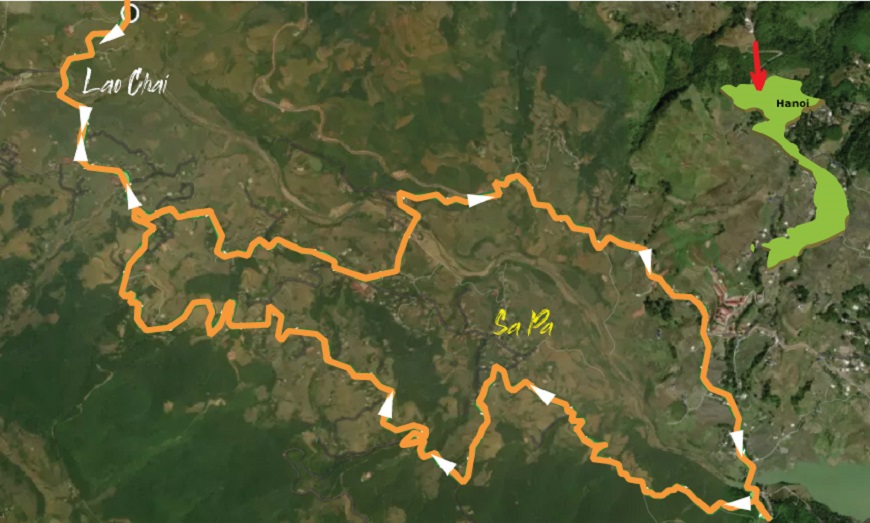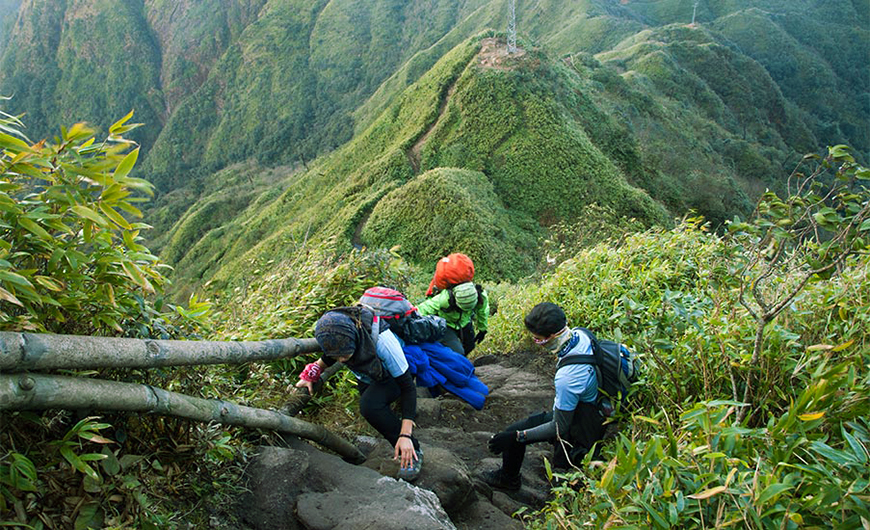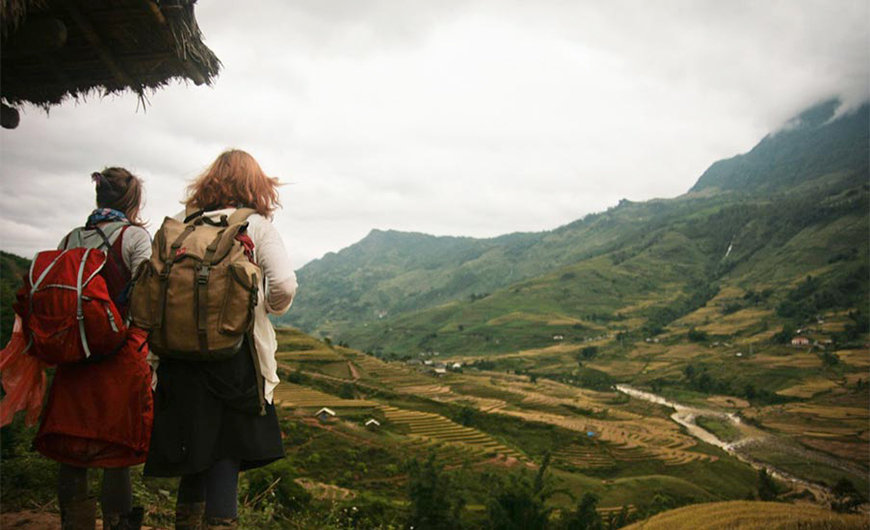Located in the Tonkin Mountains in northwestern Vietnam, the charming town of Sapa is a veritable paradise for trekking and hiking enthusiasts. With its breathtaking scenery, spectacular rice terraces and strikingly authentic ethnic villages, Sapa shines as a natural and cultural gem not to be missed.
Where is Sa Pa and how do I get there from Ha Noi?
Located in the province of Lào Cai, in north-western Vietnam, Sapa is a former French colonial resort. Nestled at 1,500 m in the Hoang Lien Son mountain range, it is a popular tourist destination thanks to its spectacular scenery, including rice terraces, mountains and valleys. Sapa is also home to many ethnic minorities, such as the Hmong and Dao.
To cover the 320 km from Hanoi to Sapa, you have several options:
- ♦ Bus: This is the most popular and economical means of transport. The journey takes around 5.5 to 6 hours. Many bus companies offer overnight trips, in sleeper or luxury buses. Prices vary according to the departure bus station, so don't hesitate to compare prices according to your preferences.
- ♦ Train: Many travellers choose the Hanoi-Lao Cai night train, then take a public or private bus to cover the remaining 35 kilometers to Sapa. The train journey takes around 8 hours, with an extra hour needed to reach Sapa from Lao Cai. Note that the night train arrives at Lao Cai station between 6 and 7 am.
Tip: You can take the train to Lao Cai at the Tran Quy Cap station in Hanoi (west entrance to Hanoi station) from 7 euros per seat. Tickets are easily available online.
- ♦ Private car: This is the most expensive option, but also offers the greatest flexibility. The journey by private van from Hanoi to Sapa takes around 5 hours.
Tip: The price of a minibus ticket is around 16 to 20 euros. Cab fares range from 140 to 250 euros (for up to 9 passengers).
These transportation options offer different advantages in terms of cost, comfort and convenience. Choose the one that best suits your preferences and budget for a smooth journey to Sapa.

Trekking around Sapa - Photo : Sapa Landscape
When to go?
The ideal time to explore Sapa is from September to November and March to May. Temperatures are pleasant during these periods, with sunny days and less frequent rainfall.
What to eat in Sapa
Local cuisine is varied and delicious. Don't hesitate to try mountain specialties such as thang co (horse viscera stew), lau ca tam (catfish fondue) or xoi ngu sac (glutinous rice with five colors).
Where to sleep?
Sapa offers a variety of accommodation options, from high-end hotels to homestays with local people. Choose a homestay in an ethnic village for an authentic experience. In this way, you'll be able to explore the daily life of the local inhabitants and share their customs.
A little history and legend
For centuries, the Sapa region has been populated by ethnic minorities such as the H'mong, Dzao and Tay. Each group is unique in terms of culture, traditions and language.
Did you know? Sapa was once a simple market town, which became famous in the early 20th century thanks to the French colonists.
Mount Fansipan legend: Vietnam's highest peak, at 3,143 metres, accessible by demanding trek or cable car, is said to be the home of a giant, long-haired fairy.

Hikingaround Sapa - Photo : Sapa Landscape
I can't resist the pleasure of telling you the legend of the union of the Dragon and the Fairy, which is certainly very true ...
Once upon a time, in the beginning of time, there was a mighty dragon named Sapa. He dwelt in the depths of the ocean until one fine day, he encountered the splendor of a celestial fairy named Muong Hoa. Sapa was instantly captivated by her beauty and fell deeply in love with her. Overcoming his own doubts, he eventually succeeded in winning the fairy's heart. From their love sprang a majestic mountain called Fansipan, symbolizing their union and power. Sapa became the guardian of this mountain, watching over its mysteries and protecting its inhabitants. Muong Hoa, meanwhile, spread its beauty and fertility to the surrounding lands, nourishing crops and villages.
But that's not all. According to legend, Fansipan was also the scene of an epic battle between humans and giants. One day, fearsome giants descended from the mountains and attacked the valley's peaceful villages. Terrified, the villagers turned to Sapa for help. True to his role as protector, the dragon gathered together all the animals of the forest and bravely led them into battle. After a fierce battle, the giants were defeated and driven from the region.
Fansipan then became the symbol of the victory of good over evil and protection against evil forces.
Today, the Vietnamese continue to pay homage to the majestic Fansipan mountain. Its history and legends are deeply rooted in national culture and identity. Fansipan is of great importance as a place of pilgrimage for Buddhists and Taoists, who come here to find inspiration and meditate, thus demonstrating their respect for the symbolism of this legendary mountain.
Trekking and hiking: discovering the wonders of Sapa
Sapa and its surroundings offer a multitude of hiking trails for all levels, from easy walks to multi-day treks.
Here are some popular options:
Easy and intermediate levels
✓ The bamboo trail offers a quiet experience of the giant bamboo forest, 4 km long.
✓ Cat Cat Village is 3 km away, where you can meet the H'mongs and discover local crafts.
✓ The cable car provides easy access to the top of Mount Fansipan, offering magnificent views.
✓ Rando Lao Chai & Ta Van: A quiet walk in beautiful mountainous landscapes, mainly inhabited by Black H'mong. Calculate a duration of 3 to 4 hours at a reasonable rate, assuming you return to Sapa by motorcycle or jeep. If you walk back to Sapa, add at least two extra hours.
✓ The Muong Hoa Valley stretches for 8 km, offering beautiful landscapes and rice terraces. There is another route, about 12 kilometers, which will require about 4 hours and 30 minutes of walking (see illustration below).

Sapa, a trekking paradise - Photo : Sapa Landscape
Advanced level
✓ 2 to 4 day trip: Visit ethnic villages and explore isolated landscapes.
✓ Ascent of Fansipan through the 9 km course: a physical adventure and an exceptional panorama in 3 to 4 days.
✓ Sa Pa-Hau Thao is an average track of about 11 km from Sa Pa to Lao Cai. In less than 4 hours, explore beautiful landscapes and cross villages where H'mong Noir live.
These are just a few ideas among dozens of others! I invite you to consult the site of
Sapa Landscapes for other more adventurous ideas or consult the programs of Mr Linh’s Adventures.
Sapa and mass tourism : Should we go hiking again?
Surtourism in Sapa
In recent years, Sapa, a quiet old mountain village, has become a popular tourist destination. The rise of this popularity has led to a overtourism that has harmful consequences on the environment, local culture and the experience of tourists. Note in particular:
- • Environmental impact: waste growth, pollution, destruction of hiking trails.
- • Consequences for local residents: Destruction of identity, pressure on local resources, exploitation of ethnic minorities.
- • Unfavourable experience for travellers: High attendance, overcrowded trails, loss of charm and serenity.

Ascent of Fansipan - Photo : Sapa Landscape
Nevertheless, Sapa is still worth a visit for hikers
- • Beautiful environments: rice terraces, picturesque villages, breathtaking mountain landscapes.
- • Variety of trails: Suitable for all levels, ranging from easy walking to multi-day trekking.
- • Face-to-face with the locals: Encounter with the culture and customs of mountain tribes.
Alternatives in Sapa
If you are looking for a more authentic and less crowded hiking experience, here are some alternatives to Sapa:
- • Ha Giang: Spectacular mountains, ethnic villages and scenic winding roads.
- • Mu Cang Chai: Rice terraces with mesmerizing views.
- • Bac Ha: Colorful Sunday market, authentic villages and hikes in the rice fields.
My tips for traveling to Sapa responsibly
- • Avoid peak periods (school holidays, weekends) for a more peaceful experience.
- • Choose a responsible itinerary: Support local agencies that invest in sustainable tourism.
- • Eco-friendly: Reduce waste, choose sustainable paths and help preserve nature.
- • Contribute to the local economy by living in the community, enjoying local food and buying handicrafts.

Tours around Sapa - Photo : Sapa Landscape
My tips for preparing well
- • Select a route that suits your fitness and desires.
- • Be sure to put on comfortable, weather-appropriate hiking clothing and footwear.
- • Take adequate water and food.
- • Be sure to protect yourself from the sun and insects.
- • If you are not used to hiking in the mountains, it is recommended to consult a local guide.
In conclusion
Sapa faces difficulties related to mass tourism. However, by moving slightly away from the usual paths and adopting a responsible and respectful approach, it is possible to take full advantage of its natural and significant treasures. By opting for different routes and getting involved with the local inhabitants, you have the opportunity to promote more sustainable and ethical tourism in Sapa.
Check those ideas for you